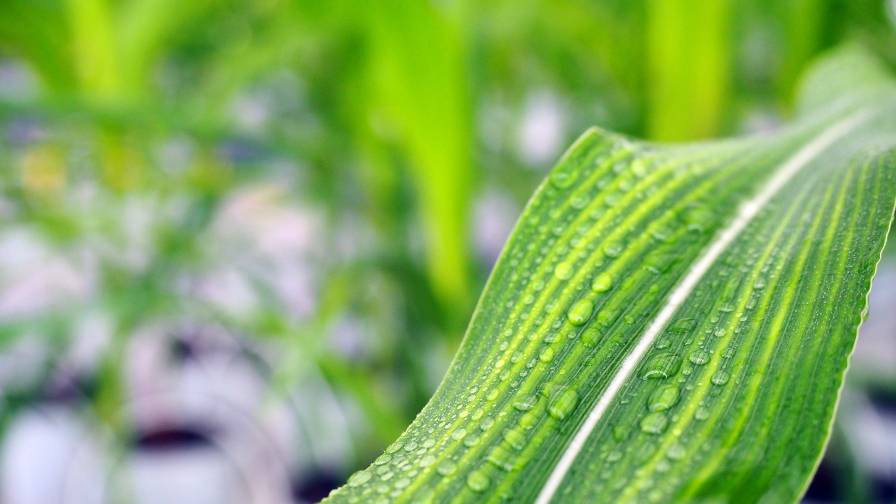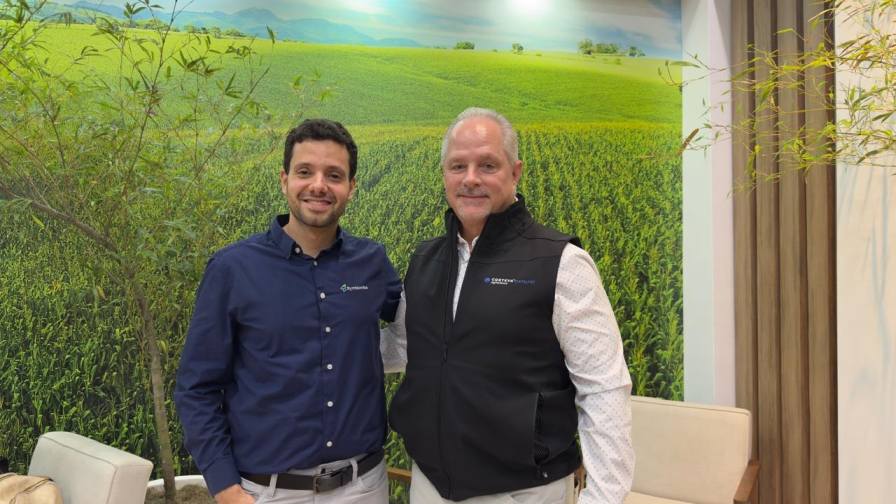North Africa: Raising Productivity
The countries of North Africa (Mauritania, Morocco, Algeria, Tunisia, Libya and Egypt), like the rest of Africa, face severe problems in terms of overpopulation, food deficits, and a highly fragile production system due to large areas under desert conditions — problems accentuated by a decrease in water supplies and renewable energy sources. Nonetheless, remarkable efforts have been devoted to overcoming the agricultural problems and pushing ahead for more development to help increase and improve the agro-developmental process.
Modernizing African Ag
The changes occurring in agriculture can be observed and evaluated through the change in the cultivated area, productivities of main groups of crops and livestock groups, irrigated area, chemicals consumption, agro-machinery and labor force, and the agro-trade indicators.
During the past decade, cultivated area in the North African countries had small changes compared to the observed changes indicated from 1980-90 (Figure 1). Algeria and Egypt had a small increase in the total cultivated area over 1990 to 2007 by about 2% and 7%, respectively. The cultivated area in Morocco and Tunisia through 1990 to 2007 fell 5% and 1%, respectively.
As rain-fed agriculture is the dominant agricultural system in North Africa, cultivated area and crop productivity are highly correlated to precipitation variability. Egypt is the only exception for this situation, with about 95% of cultivated area fully irrigated. Over the last decade, there was a general trend of slight increase in crop productivity. The advance in cereals productivity 1980-99 was attributed to advanced high-productivity cultivars coupled with applying modern agriculture applications.
Increasing irrigated area was an important perspectives encouraged and adopted in North Africa as an efficient strategy to face frequent drought events and sustain crop productivity. Irrigated area in Algeria, Morocco, and Tunisia rose by about 2% to 7% after 2000, reflecting national policies that support improvement in crop productivities while minimizing environmental risks.
The agricultural sector had a general trend of modern technology adoption in terms of modern irrigation systems, protected cultivation technology, and farm machineries. Both policy makers and farmers in North African countries encourage modern agricultural techniques to reduce environmental pressures and hazards, and to increase agricultural profit as much as they can. Farm income had a slight improvement over the last decade, estimated by 5% to 25% increase compared to 1980-90 levels. Exports of agricultural products also had a significant improvement in the last decade, especially for Morocco and Tunisia.
Important Crops
Cereal production has increased in Egypt, Algeria, Tunisia and Morocco for the past 20 years (Table 1). The three main sources of growth in cereals production are expanding land area, increasing the frequency with which it is cropped, and boosting yields. It is expected in the future that 80% of increased cereals production in developing countries will come from intensification, such as higher yields and increased multiple cropping. The remaining 20% will come from expansion of agricultural land, according to Food and Agriculture Organization (FAO).
Production of fruits and vegetables grew about 80% in Egypt and Algeria from 1991 to 2004. Production in Tunisia and Morocco doubled during the same time (Table 2).
Table 1: Cereals Production And World Share
| Country | Production (1,000 tonnes) | Share in world (%) | ||||
| 1989-91 | 2003 | 2004 | 1989-91 | 2003 | 2004 | |
| Egypt | 12,672 | 20,682 | 21,315 | 0.67 | 0.99 | 0.94 |
| Morocco | 7,456 | 8,473 | 8,604 | 0.39 | 0.41 | 0.38 |
| Algeria | 2,481 | 4,266 | 3,998 | 0.13 | 0.20 | 0.18 |
| Tunisa | 1,626 | 2,312 | 2,155 | 0.09 | 0.11 | 0.09 |
|
Source: FAO |
||||||
Table 2: Fruits and Vegetable Production And World Share
| Country | Production (1,000 tonnes) |
Share in world (%) |
||||
| 1989-91 | 2003 | 2004 | 1989-91 | 2003 | 2004 | |
| Egypt | 13,380 | 23,259 | 24,105 | 1.65 | 1.73 | 1.74 |
| Morocco | 5,223 | 7,124 | 7,810 | 0.64 | 0.5 | 0.56 |
| Algeria | 2,900 | 5,200 | 5,151 | 0.36 | 0.39 | 0.37 |
| Tunesia | 2,199 | 3,185 | 3,368 | 0.27 | 0.24 | 0.24 |
|
Source: FAO |
||||||
Working With Drought
The region’s agricultural development strategy is primarily based on preserving and improving the productivity of cultivated land, and protecting it from urban expansion. In the last two decades, due to increasingly frequent drought waves in the region, supplemental irrigation areas increased gradually to cover more than 50% of rain-fed agricultural areas, which had positive impacts on increasing the overall productivity of cultivated crops. However, sustaining the water resources required for supplemental irrigation application could be one of the serious challenges that the region’s agricultural sector will face in the next decades. The North African countries are projected to experience water scarcity as a result of climate change, as well as the continued growth in water consumption rate attributed to population growth and urbanization.
National drought management plans and early warning systems are among the important factors leading to significant advances in the region’s agricultural sector. Watershed reservoirs, water harvest techniques, high controlled and deficit irrigation, early warning networks, and agrometeorology networks and applications are the main risk-management tools to combat drought and other unfavorable environmental conditions for the region during the last decades. These tools and concepts provide good and sustainable management for natural and production resources, coupled with minimum level of crop losses under severe environmental conditions, with a positive effect on farm profit. Also contributing are modern agro-technology and management techniques such as calculating crop-water and fertilizers requirements based on climatic conditions, IPM techniques, improved irrigation and drainage systems, soil treatments, land leveling, etc.
International cooperation was an important factor affecting the agricultural situation in the region over the last decade. The involvement of the North African countries in many international projects, activities, and events facilitated the agricultural experience exchange and technology transfer. However, there is a great need for more exchange of experience and technology in order to face the growing pressures on the ag sector.
Diversified Environments
Agriculture in North Africa takes place within a diversified environment, a substantial proportion of which is classified as “less-favored,” where agriculture production is significantly constrained by factors such as moisture stress due to low and highly variable rainfall, temperature extremes, short cropping season, shallow soils, soil nutrient depletion, steep slopes, lack of infrastructure, inadequate policy support, and others. In view of the prevailing shortage of arable land and water resources, sustainable increases in agricultural production must come from increases in productivity area per unit area, particularly through a significant improvement in water-use efficiency at the farm level. It is believed that significant investments in agricultural research, technology transfer, and extension are required for agricultural development in North Africa to enable this region to meet the challenge. In other words, the priorities of agricultural development in the region should focus on:
1) Fostering broad-based rural economic growth.
2) Improving social well being, managing and mitigating risk, and reducing vulnerability.
3) Enhancing sustainability of natural resource management.
Implementing New Strategies
The aim should be to devise and implement strategies that would ensure reasonable balance between the goals of growth and preservation. Such options should include:
a) Technology and management for high-potential areas.
b) Technology and management for less-favored areas.
c) People-centered development.
d) Investing in science and technology.
e) Building regional and international partnerships.
In addition, further integrated technical, institutional, and policy options to help build coping strategies could be put in practice, such as sustainable desert development as a means for combating global warming and overcoming food reduction, which can be dealt with by ensuring the sustainable development of desert lands based on a holistic approach where agricultural, technological, socio-economic, and environmental concepts are implemented. This is achieved through the following:
1) Changing cropping patterns in newly reclaimed desert lands to satisfy food self-sufficiency rather than food security.
2) Developing new high yielding varieties of agricultural crops in irrigated areas.
3) Adopting new and environmentally friendly techniques to increase productivity and improve the quality of crops for national use and for export.
4) Encouraging tree planting as well as other carbon dioxide absorbing crops in the desert and promoting no-till agriculture.
5) Developing legislation for production of certified seedlings and seed crops to agree with international legislation.
6) Implementing measures to rationalize use of and develop water resources (water pricing, recycling, desalination, new irrigation, and pumping techniques).
7) Promoting the use of energy efficient technologies, and designing housing to save energy and attract new residents. Facilities should be equipped with super-efficient lighting and appliances and professionally operated in order to attract those who will have to migrate from their homes because of effects of global warming or due to expected population increases. The challenge is to increase food production, farm productivity with sustainability, and enable fair agricultural trade across the entire production and commodity market chain.
8) Increasing financial and human investment in ag research and innovation, as well as further strengthening some of its existing world class agricultural research and education institutions and develop many more in each country.
9) Encourage the private sector to take advantage of the research, development, and production of certified seedlings of fruit trees and seed crops.
10) The future of agriculture research globally lies in how biotechnology and nanotechnology, information and communications technology and materials science will be harnessed for agricultural production. Biotechnology and nanotechnology will provide us the means to produce crops and livestock that can cope with the changes that agriculture will undergo due to climate change and environmental degradation. We not only have to increase production but also prevent losses from pest and diseases. This is where these new genetic technologies will contribute. Information and communications technologies will contribute to improving farm productivity, bring greater sustainability of natural resources and energy, enable innovation, and help producers integrate more efficiently with markets. Materials science will help leverage the efficiency in how to use soil, water, energy, and labor in agriculture. New forms of agriculture and use of natural resources, for example in the use of saline and waste water, will emerge from the advances in material sciences.
11) Conducting training programs in the fields of crop breeding, variety improvement, agricultural practices, and postharvest treatments.
12) Development of postharvest treatments using new techniques to enhance quality for local and foreign markets and the dissemination of these new techniques through the extension programs.
Threats Against Development
North African countries are facing several obstacles and disadvantages imposed on the agricultural development that threaten the future livelihoods of the poorest sector of the society. Among the most important are:
1) Global climate change and persistent drought: North Africa is predicted to become warmer and drier with reduced crop productivity compared to other regions.
2) Water scarcity and inefficient water use: North Africa is already one of the most water-scarce regions, and this is predicted to worsen markedly over the next 25 years. The limited water resources continue to be mined, causing depletion of water tables and the salinization of good agricultural lands.
3) Limited land resources and continued desertification: Arable land constitutes only 5% of the region’s total land area; over 45% of the area dedicated to agriculture and rangeland experiences some form of degradation.
4) Persisting rural poverty: Poverty is a major threat, especially in the rural areas where 60% to 70% of the poor are concentrated.
5) Insufficient investment in science and technology agricultural research: As a result of the limited investment in ag research, insufficient and often inadequate production and protection technologies are available for transfer to the farmers, including improved cultivars of various commodity crops.
6) Inadequate policy environment: Technology alone will have limited impact if not supported by an enabling policy. Therefore, science and technology should be backed by policy research to establish appropriate national polices for a positive impact at the farmer’s level.
7) In addition to the former issues, rapid change, driven by factors such as population growth, increases in the demand for livestock products as incomes rise, and urbanization.
8) Lack of fresh water resources. The Nile River is the most important source of fresh water in the region.
9) North African countries share long-standing environmental issues, i.e., water scarcity and quality, land and coastal degradation, and desertification and urban and industrial pollution and weak institutional and legal frameworks.
10) Soil problems (i.e., salinity, high level of calcium content, soil pH, structure), pests, diseases, irrigation water and its quality). In this concern, the pervasive impacts of climate change on, and the overuse/misuse of limited water supplies, are nowhere more relevant than in the dry lands — particularly North Africa. There are limited areas of fertile, well-water land and often inefficient and unsustainable food production and continuing population growth.
The growing population and recent droughts are putting water resources under pressure and calling for new approaches for water planning and management. As countries are using their water resources with growing intensity, poor rainfall increasingly leads to national water crises as water tables fall and reservoirs, wetlands and rivers, and global warming could cause further changes, variability, and uncertainty.





